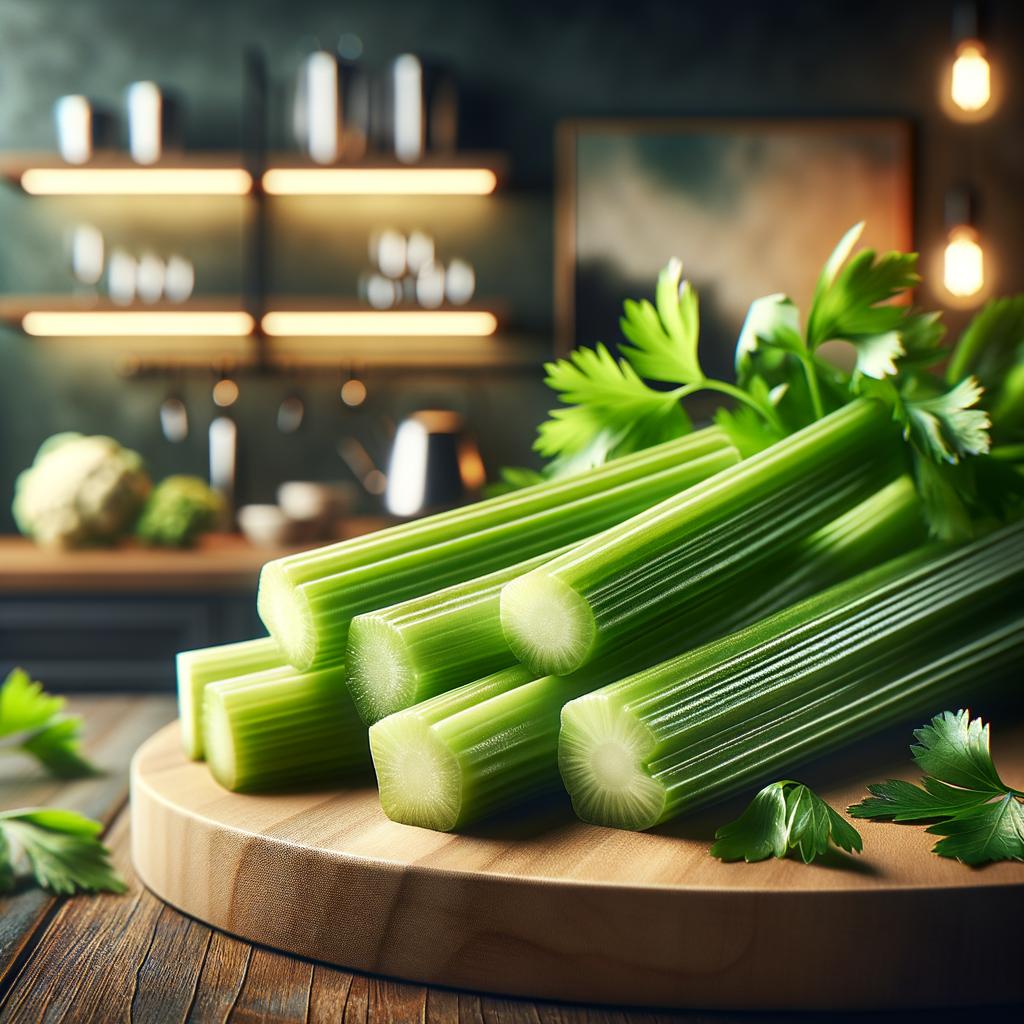Celery Sticks

Description
The humble celery stick, a staple in many kitchens, is an unsung hero of the culinary world. Its slender, elongated form is a vibrant emerald green, with a crisp, fibrous texture that snaps satisfyingly when bitten. The flavor profile of celery is distinctive and complex, an intriguing blend of earthy, slightly bitter undertones, and a refreshing, almost peppery finish. The leaves, often overlooked, carry a concentrated version of the same flavor. What sets celery apart from its vegetable counterparts is its high water content, which gives it a uniquely refreshing crunch, and its strong aromatic qualities, which are often used to enhance the flavors of other ingredients.
Primary Uses
Celery is a versatile ingredient, finding its place in a wide variety of dishes across different cuisines. It is a key component of the French mirepoix (a mixture of celery, onions, and carrots), used as a flavor base for soups, stews, and sauces. In the United States, it's a classic accompaniment to buffalo wings and an essential element in stuffing, salads, and the famous Bloody Mary cocktail. In Chinese cuisine, celery is often stir-fried with beef or tofu. Beyond its culinary uses, celery has been used in traditional medicine for its potential anti-inflammatory and antioxidant effects.
History
The history of celery dates back to the ancient civilizations of Rome and Greece, where it was not just a food ingredient but a symbol of victory and a key element in their burial rituals. Over time, it transitioned from being a wild, bitter herb used for medicinal purposes to the cultivated, milder vegetable we are familiar with today. The Victorians, in their characteristic style, even turned celery into a status symbol, displaying it in dedicated crystal vases on their dining tables. The humble celery stick has certainly had an intriguing journey through the annals of food history.
Nutritional Information
Despite its modest appearance, celery is a nutritional powerhouse. It is low in calories yet high in dietary fiber, making it a popular choice for weight loss diets. It also packs a punch with essential vitamins and minerals such as Vitamin K, Vitamin A, folate, and potassium. Its high water content makes it a hydrating snack, especially during hot weather. When compared to other crunchy vegetables like carrots, celery has fewer calories and a higher water content, but slightly less beta-carotene. It's a testament to the fact that even the most unassuming foods can hold a wealth of nutritional benefits.

